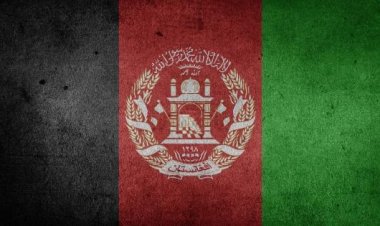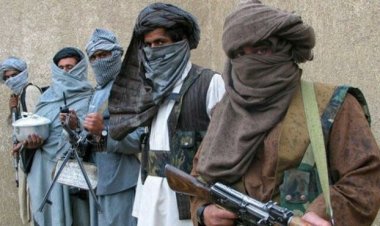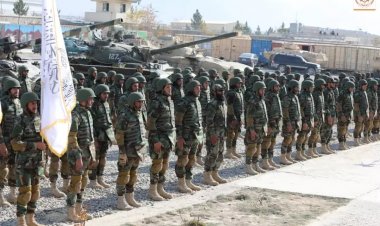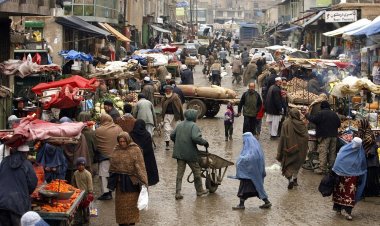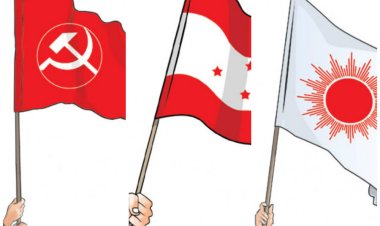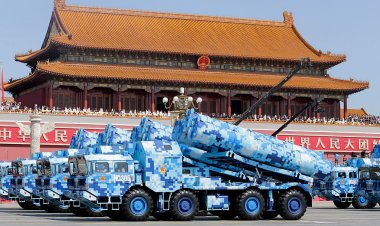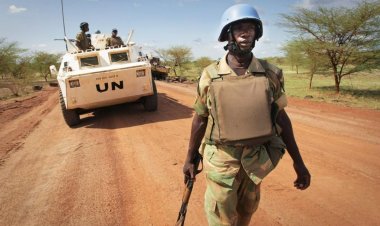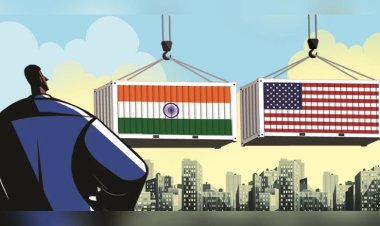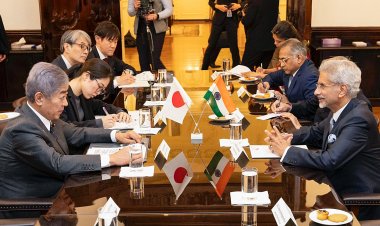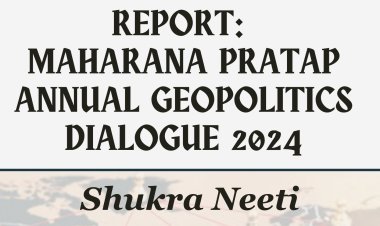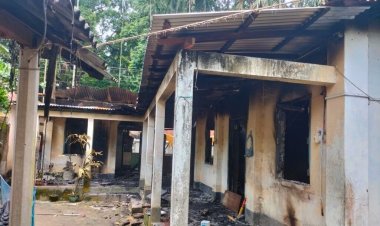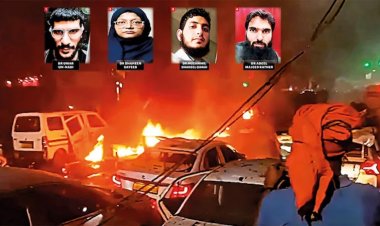Afghanistan-Pakistan Border: A cauldron of conflict and Tehrik-e-Taliban Terror Zone
This article delves into the complex and evolving dynamics between Pakistan and the Taliban with the rise of the Tehrik-e-Taliban.
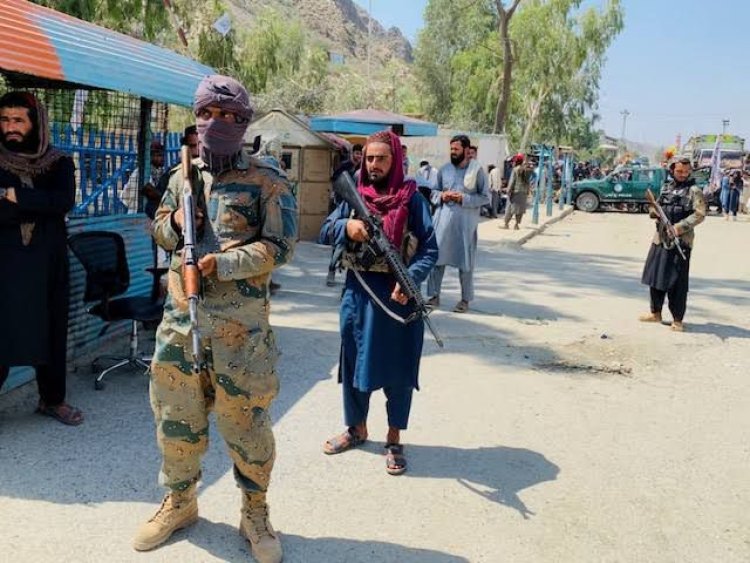
Analysis
By Ruchika Sharma
Pakistan is grappling with the consequences of its long-standing strategy of harboring the Taliban, under the assumption that the group would remain loyal to Islamabad in return for years of support. After the Taliban seized power in Kabul in August 2021, then Prime Minister of Pakistan Imran Khan stated that Afghanistan had broken the shackles of slavery. However, the situation has changed dramatically now, as Tehrik-e-Taliban, famously known as Pakistani Taliban, posing a serious security threat to Pakistan. This serves as a stark reminder that even after nurturing dangerous entities for years, they never hesitate to turn against their hosts once they attain power. This is exactly what has happened in Pakistan.
Historically known for providing a haven to the terrorists for strategic purposes, and the secretive collaboration between its state agencies and non-state actors, Pakistan is now experiencing the repercussions of its own actions at cross borders and internally as well.Afghanistan-Pakistan(Af-Pak) region is one of the most unstable and hotly contested areas for militant activities in the world. It is home to some of the lethal terror outfits, including al-Qaeda (AQ), Tehrik-e-Taliban Pakistan (TTP), and the Islamic State of Khorasan (ISK).
Ever since the Taliban government got control of the fractured territory of Afghanistan following the US withdrawal, Tehrik-e-Taliban (TTP), a militant group operating within Afghan soil has ruffled the feathers in Islamabad. The insurgency by militant groups has strongly resurged, increasing border tension between both countries. The United Nations has reported that the Tehrik-i-Taliban Pakistan (TTP) has a significant presence in Afghanistan, with several thousand fighters strategically positioned on both sides of the Afghanistan-Pakistan border. In response to Pakistan's accusations regarding Afghanistan providing refuge to terrorists, the Taliban has denied these claims.
Escalating Tensions
Tensions at the border escalated when a security post in Mir Ali in North Waziristan was attacked and killed seven Pakistani soldiers on March 16. In response, the country’s President, Asif Ali Zardari, then vowed retaliation. On March 18 this year, Pakistan conducted airstrikes inside Afghan provinces of Khost and Paktika provinces, erupting clashes along the border. According to Afghan officials, at least eight civilians, including three children, were killed in the attacks. With the Taliban in power next door, Pakistan has realised it’s not an ally but a significant challenge, far beyond what it had anticipated.
In recent years, numerous attacks have been carried out by TTP. An Al Jazeera report of January 2023 mentioned that the Pakistani Taliban (TTP) issued threats against Prime Minister Shehbaz Sharif and Bilawal Bhutto Zardari, leaders of the ruling coalition of the PML-N and PPP, respectively. The TTP accused the government coalition working at the behest of the United States, stating that Prime Minister Sharif's declaration of war against the TTP was intended to appease America. This threat came just after the National Security Committee (NSC), led by Sharif andGeneral Asim Munir, committed to fight against terrorism in Pakistan.
The ideological Alignment
The Taliban return has invigorated TTP, which are the ideological brothers, both Pashtun adherents of the strict Deobandi interpretation of Islam, advocating for Sunni Islamic clergy role. The achievements of the Taliban in Afghanistan are seen as a potential blueprint for the intentions of the Pakistan Taliban within Pakistan. The TTP seeks to establish stringent sharia law within the country. In northwestern Pakistan, Tehrik-e Taliban enforced the sharia system in the same style that the Afghan Taliban imposed in Afghanistan before 9/11. After Afghan Taliban’s takeover several TTP prisoners were released from prisons in Kabul, including the deputy leader of TTP, Maulvi Faqir Mohammad. After their release,The Tehrik-i-Taliban Pakistan (TTP) celebrated their victory by showcasing their strength through activities such as organizing motor rallies in eastern Afghanistan and exercising operational independence. In addition to congratulating the Taliban on their assumption of power, the TTP also expressed their commitment to remaining an ally. The current situation in Pakistan presents significant challenges, particularly since July 2020, as the Tehrik-i-Taliban Pakistan (TTP) has established strongholds. Ten factions involved in anti-government activities have aligned with the Pakistani Taliban, including three factions linked to al-Qaeda in Pakistan and four major groups that were previously part of the TTP but withdrew in 2014.
A report by Pakistani newspaper Dawn states that Hafiz Gul Bahadur, once considered a part of the ‘good Taliban’, now leads the outfit which is considered as the strongest militant group in North Waziristan. He was ousted in operation Zarb-i-Azb and sought refuge in Afghanistan. Notably, another counter-terrorism operation known as operation Radd-ul-Fassad, initiated in 2017, reduced insurgent attacks from TTP militant groups. Following the US peace deal with Taliban in 2021 and its subsequent withdrawal after 20 years from Afghanistan, Pakistan and Afghanistan are on a collision course. The ongoing conflict and instability in Afghanistan perpetuate a cycle of terrorism, weakening regional peace, stability, security and development. Pakistan, because of its proximity and historical connection, bears the burnt to a greater extent. Pakistan has a decade-long strategy of supporting Islamist Extremists for its geopolitical goals. During the Afghan anti-communist civil war, Pakistan provided support to the Mujahideen through weaponry and training. Pakistan played a pivotal role in facilitating the Taliban's rise in the 1990s, endorsing the Sunni Islamist group. When in the late 1990's Taliban assumed power, Pakistan was among only three countries to officially recognise the regime. After pressure from the US and its war on terrorism in 2001, Taliban was toppledDuring the period of US presence in Afghanistan, Pakistan engaged in a complex strategy of both supporting the United States while also providing a safe haven for the Taliban. This duality allowed the Taliban leadership to operate from Quetta, Balochistan, within Pakistani territory. Tensions between Pakistan and the Afghan government have historical roots, primarily stemming from the disputed Durand Line border. The Taliban relied on Pakistan for security while Pakistan saw them as a counterbalance to the Kabul government. As the United States withdrew from Afghanistan, Pakistan aimed to strengthen its regional influence strategically, but the outcome was not as anticipated.
Historical Context
The rise of the Pakistan Taliban is closely linked to the US invasion of Afghanistan in 2001.The Taliban, radical Islamists running Afghanistan at that time refused to hand Bin Laden and provided him with sanctuary. In response, the US launched airstrikes against Afghanistan, dubbed Operation Enduring Freedom. Additionally, NATO coalition troops also declared war on Afghanistan. The US dislodged the Taliban regime and established a transitional government in Afghanistan. Throughout the US-led counter-terrorism operation, the TTP crafted their narrative, appealing to religious sentiments. The terror group portrayed themselves as courageous opponents of the United States, advocating for an Islamic system as the solution to all the problems. While Pakistan initially supported the US, this collaboration angered Pakistani jihadists. Consequently, the TTP was formed in 2007 by uniting various outlawed groups. Their goals were manifold: backing the Afghan Taliban against US and NATO forces, establishing a stricter Islamic state in Pakistan devoid of American influence, and opposing the Pakistani government's alignment with the West.
Unforeseen consequences
At first, Pakistani extremists sympathised with the Afghan Taliban, but the 2007 Lal Masjid incident in Islamabadmarked a watershed moment. By December of that year, 13 militant groups, led by Baitullah Mehsud in South Waziristan had officially created the TTP. They aimed to support the Talibanin Afghanistan and oppose the Pakistani military's perceived aggression in Pashtun-dominated areas such as Swat and North Waziristan. Additionally, they called for the removal of military checkpoints in the Federally Administered Tribal Areas (FATA) and the release of Lal Masjid cleric Abdul Aziz. These objectives indicated a desire for the implementation of stricter Sharia law in Pakistan and opposition to foreign military presence in Afghanistan. Interestingly, despite their initial unwillingness to participate in peace negotiations, the TTP eventually entered into dialogue with theNawaz Sharif government in 2014.
Baitullah Mehsud, the founding leader of the Tehrik-e-Taliban Pakistan (TTP), died on August 5, 2009, while his successor, Hakimullah Mehsud, died on November 1, 2013. In 2013, the TTP appointed Mullah Fazlullah as the group's leader, marking the first instance where the leader hailed neither from the volatile tribal belt nor from the Mehsud or Wazir tribes. Fazlullah first gained prominence in 2000 through his incendiary radio broadcasts, where he vehemently denounced the Pakistani government, education, and the polio vaccine. He also claimed responsibility for ordering the shooting of Malala Yousafzai in 2012 and was committed to imposing Sharia law in Pakistan. According to a BBC report, analysts regarded him as more brutal and ruthless than his predecessor Hakimullah, who was killed in a US drone strike. Analysts also highlighted Fazlullah’s close ties to the Afghan Taliban. Like Hakimullah, Fazlullah also met the same fate in June 2018. As the top figure in Pakistan's most wanted list, Fazlullah was killed in a US drone strike in remote Kunar Province, situated on the northern border with Pakistan. After the death of Maulana Fazlullah, Mufti Noor Wali Mehsud took over the leadership of TTP in 2018. A video purportedly was released showing the TTP leader instructing and encouraging militants in Chitral for the establishment of Islamic System in Pakistan.
Terrorism in Pakistan also reflects entrenched ideological issues, with religious extremism as the common denominator behind waves of terrorism both historically and presently. Ironically, Pakistan's own policies have contributed to the creation of the TTP. In an effort to counter Pashtun nationalism, Pakistan has long fostered hardline Sunni Islam in Pashtun majority areas like North and west Pakistan and Afghanistan as well. This approach helped in the formation of the Taliban during Afghanistan’s period of Soviet control in the 1980s. According to South Asia Terrorism portal, the Pakistani Taliban, or TTP recruits fighters from all seven tribal agencies in the Federally Administered Tribal Areas (FATA), as well asfrom the several districts of Khyber Pakhtunkhwa (KP) province. Originally based in South Waziristan, they have developed multiple ‘chapters’ and groups directed by local commanders who share common organisational goals across all four provinces of Pakistan. Their influence has even spread to neighbouring Afghanistan.
Increase in Attacks
The Pakistani Taliban claimed a dramatic increase in attacks in 2023 as mentioned in their own report. They reported carrying out 881 attacks across Pakistan, more than double the number that was recorded in 2022. This surge killed around 2,193 Pakistani soldiers, with the most violent bloodshed in North and South Waziristan, which was marked by frequent bombings. The attacks also spread to Punjab province, which was traditionally less affected by such violence. The TTP's objectives goes beyond ideology, they demand the release of imprisoned members and a reduction in Pakistani military presence in Khyber Pakhtunkhwa, a province bordering Afghanistan that has served as their operating base.
The recent attack against Pakistani forces comes after the failed peace talks hosted by the Afghan Taliban in Kabul. The TTP has specifically warned police in the capital of Khyber Pakhtunkhwa, Peshawar, to refrain from conducting operations against them, reflecting the ongoing tensions and violence surrounding the TTP's activities. According to Institute of South Asian Studies report, the Pakistani Taliban (TTP) is getting more organized. Over the last two years, they've established a centralised training system for their fighters and strengthened their leadership structure, bringing together diverse militant factions under a single command. This improved organisation encompasses more than just military affairs; the TTP has also built a governmental framework for the territories they control in Khyber-Pakhtunkhwa and Balochistan,including the creation of different departments such as information, finance, intelligence, and even a system for issuing religious decrees. As Pakistan deals with a slew of domestic issues, the financially strained country alsosaw a substantial influx of Afghan refugees following the Taliban takeover. Islamabad's decision to deport thousands of these immigrants is also a major point of contention between Afghanistan and Pakistan. Pakistan has justified its decision by citing its economic struggles, stating that it can’t afford immigrants who do not pay taxes and are “involved in street crimes and militant activities.
Emergence of Tehreek-e-Jihad
The emergence of Tehreek-e-Jihad TJP, which is believed to have linkages with the TTP, has raised concerns among policymakers. TJP has been responsible for at least seven major attacks this year, including the most recent being in Dera Ismail Khan. The group struck a Pakistani Air Force airbase in Mianwalicity in November, while another attack this year in Zhob city of Balochistan, it resulted in the killings of at least 14 army personnel. In January 2023, the bloodiest attack of the year happened when a suicide bomber blew himself up in a mosque in Peshawar, the capital city of Khyber-Pakhtunkhwa, resulting in the killings of at least 100 people, predominantly policemen. The attack was claimed by a TTP splinter group, Jamaat-ul-Ahrar.
Domestic Ramifications
According to statistics from the Pakistan Institute for Conflict and Security Studies, there was a notable rise in militant attacks in 2023 compared to 2022. Pakistan recorded 645 militant attacks, resulting in 976 fatalities and 1,354 injuries. In contrast, 2022 saw 380 militant attacks, resulting in 539 deaths and 836 injuries.
The average number of militant attacks per month rose from 32 in 2022 to 54 attacks per month in 2024, representing the highest monthly average since 2015. Between 2015 and 2019, there was a decline in attacks with 13 attacks per month. However, the number of attacks began to increase from 2020 onwards.
In 2023, Khyber Pakhtunkhwa witnessed the highest number of militant attacks and casualties. There was an 85 percent rise in militant attacks in mainland KP, while erstwhile FATA (newly merged district of KP) as compared to 2022 experienced a 60 % surge in militant attacks in 2023.
Pakistan facing the serious threat
With the coming together of militant groups, the primary interest of Pakistan is to create a robust security apparatus capable of defending its territory against militant attacks to avoid unacceptable damage. Primary interest can never be compromised or traded. Pakistan must implement stringent measures against terrorism and refrain from providing refuge to terrorists on its soil. Implementing stringent measures against terrorism can serve as a direct deterrence against non-state actors. The looming threat of radical Islamist extremism and the resurgence of the Taliban pose a significant risk to stability in the South Asia region and can be a fertile ground for breeding terrorism, while West Asia is already a hotbed of the same. With the evolution of warfare and the emergence of disruptive technologies like the proliferation of drones, they have the capability to carry out precision strikes with minimal risk to the operators. Their cost-effective quality provides an economical option to non-state actors to conduct offensive activities. Drones can feature if actionable measures by Pakistan are not put in place. The unclear definition of terrorism also causes ambiguity to loom large.
Path to Stability
Viewing Pakistan and Afghanistan relations through the lens of Kautilya’s Mandal Siddhant offers a framework for understanding the dynamics of both countries' relations. The traditional model suggests that neighbouring states can be categorised into concentric circles of friends and foes based on their proximity to one’s own state. As per this principle, the neighbour of one’s neighbour is a foe and enemy', while the neighbour of one’s enemy becomes a natural friend. For example, Pakistan’s neighbour Afghanistan falls within the outer circle of states that are neither natural allies nor adversaries, their relationship often fluctuates between conflict and cooperation. In another example, in the present situation, India-Afghanistan are viewed as natural allies. In order to ensure stability, and particularly addressing the issue of terrorism Pakistan needs to rekindle its ties with India. As a responsible emerging power, India has consistently advocated for combating terrorism on the global stage. Despite Pakistan's history of providing shelter to terrorists and facing international scrutiny for it, India, as a responsible actor, has extended its assistance in combating terrorism. In April 2024, Defence Minister Rajnath Singh emphasised that Pakistan must cease terrorism originating from its territory, and if it lacks the capability to do so, India is willing to provide assistance. While the road ahead may be challenging, the new Pakistan government should learn from past successes and failures to reconcile ties with India that can help sustain momentum towards peace and stability.
Disclaimer: The paper is the author’s individual scholastic articulation and the facts and figures quoted are duly referenced, as needed, and are believed to be correct.
Ruchika Sharma is pursuing MA in Diplomacy Law and Business from O.P Jindal Global University. She is interested in the evolving dynamics in the world of international politics.

